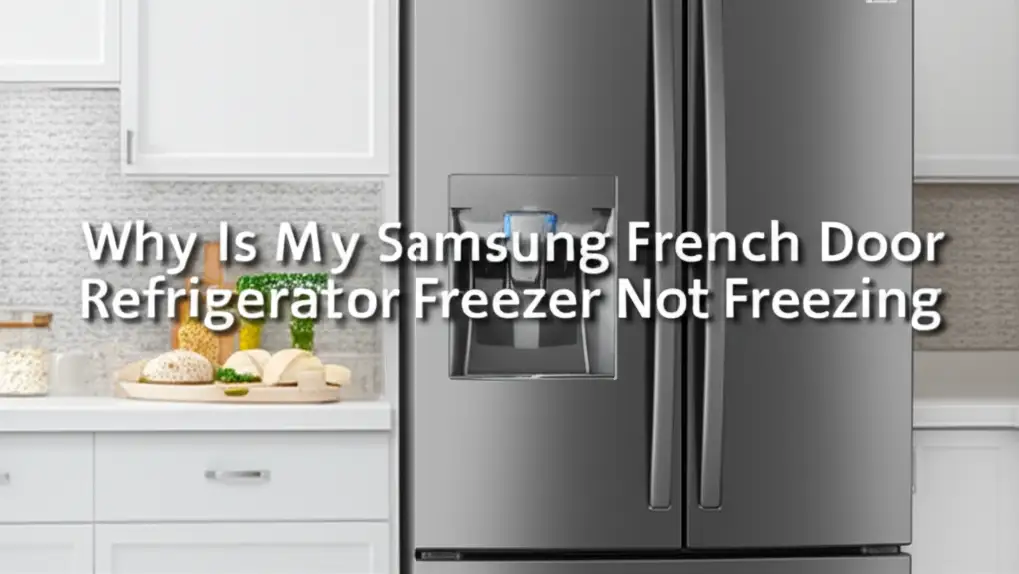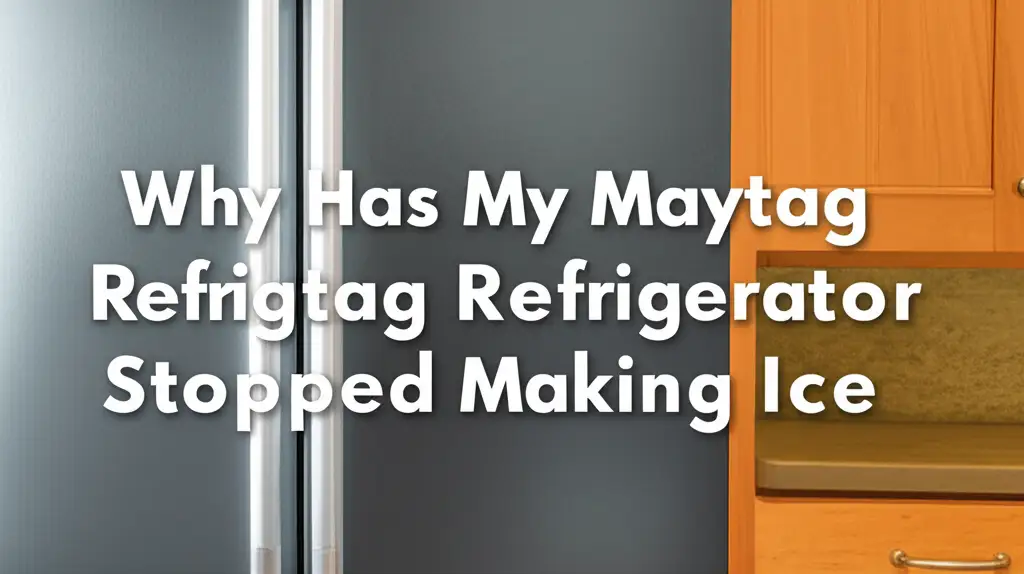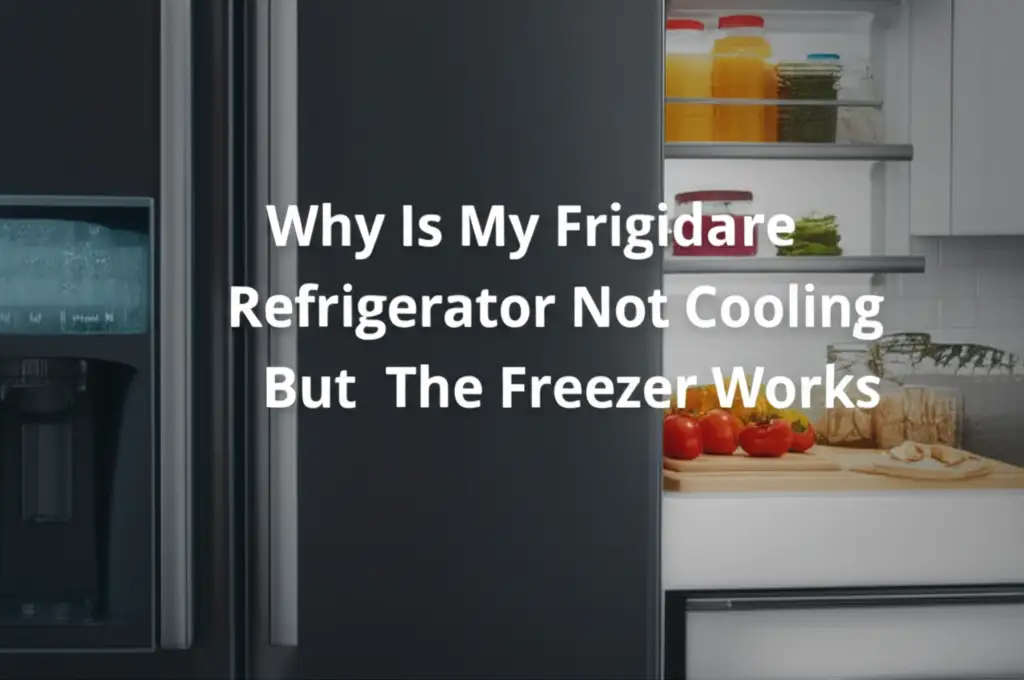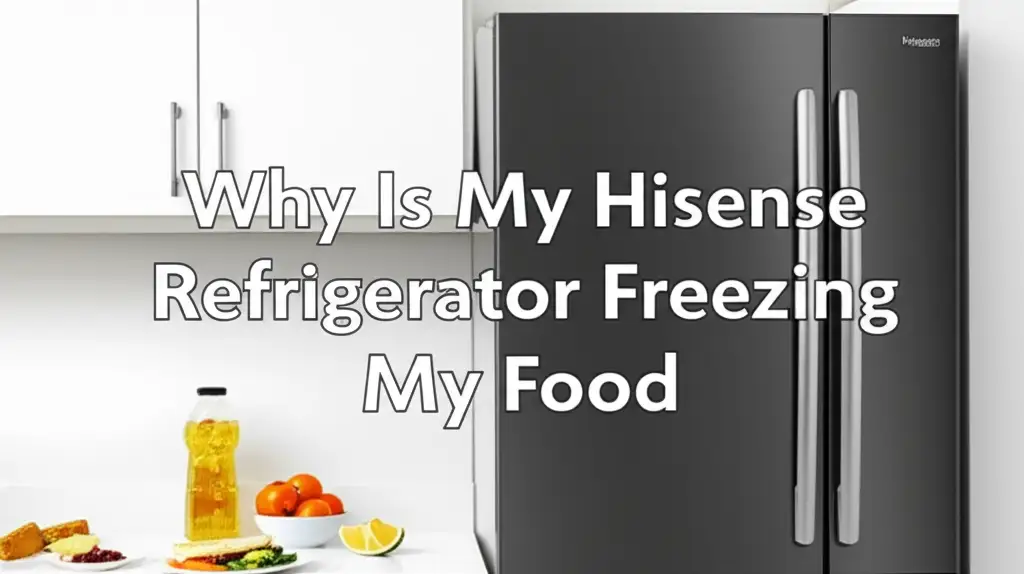· Katria Melrose · Appliance Repair · 18 min read
Why Is My Kenmore Refrigerator Freezer Not Freezing
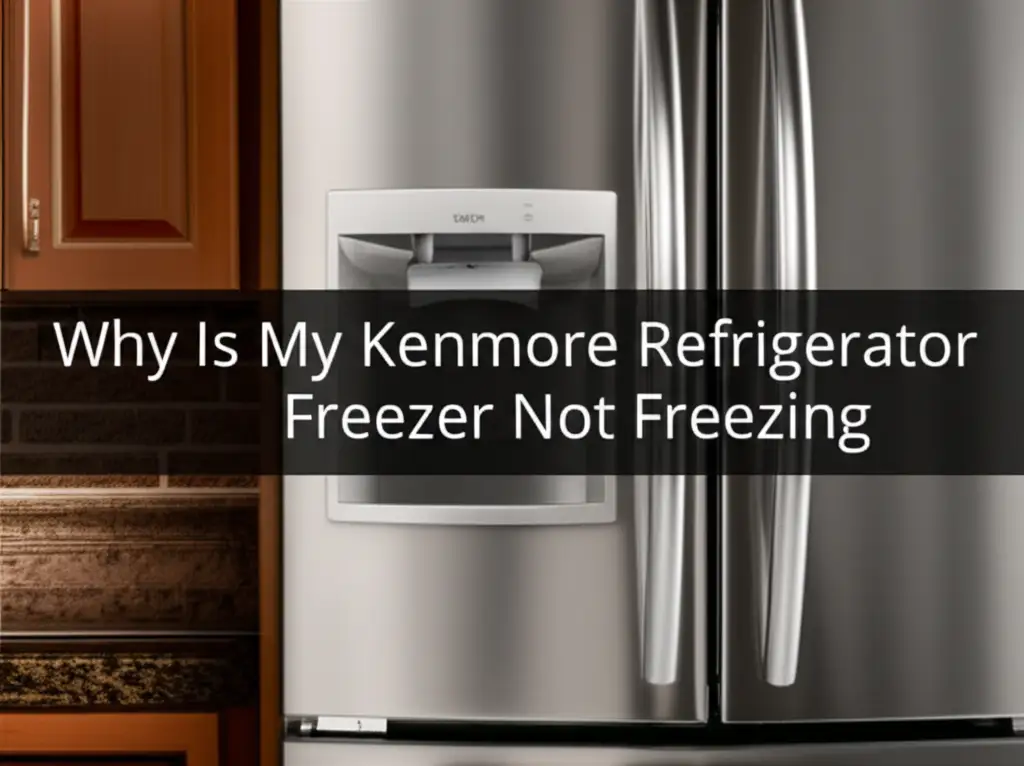
Troubleshooting Your Kenmore Refrigerator Freezer Not Freezing
Finding your Kenmore refrigerator freezer not freezing properly can be incredibly frustrating. A freezer that fails to maintain freezing temperatures puts your frozen foods at risk. You might open the door to find soft ice cream, thawed meats, and spoiled vegetables. This problem is common, but identifying the root cause can save you money and preserve your food.
This comprehensive guide will help you understand why your Kenmore freezer might not be freezing. We will explore common culprits, from simple maintenance issues to more complex component failures. You will learn how to diagnose problems and attempt basic repairs yourself. We also discuss when it is time to call a professional technician. Let’s get your Kenmore freezer working like new again.
Takeaway
When your Kenmore refrigerator freezer is not freezing, here’s what to know:
- Check the Basics: Ensure power, proper temperature settings, and clear vents.
- Inspect Defrost System: Frost buildup often points to a faulty defrost heater, timer, or thermostat.
- Clean Condenser Coils: Dirty coils prevent efficient heat exchange.
- Verify Fan Operation: Both evaporator and condenser fans are vital for cold air circulation.
- Test Door Seals: Gaps allow warm air in, impacting freezing performance.
Clear and Concise Answer
A Kenmore refrigerator freezer not freezing usually results from issues like a faulty defrost system, dirty condenser coils, or a malfunctioning fan motor. Other causes include worn door seals, an incorrect thermostat setting, or a failing compressor. Addressing these common problems can restore proper freezing function.
Understanding Why Your Kenmore Freezer Stops Freezing
It can be baffling when your Kenmore refrigerator freezer is not freezing. You expect your appliance to keep food perfectly frozen, but sometimes it just stops. This issue often stems from a disruption in the cooling cycle or external factors allowing warm air inside. Understanding the basics helps in diagnosing the problem.
Your freezer relies on a carefully balanced system of components to create and maintain cold. When any part of this system fails, the entire cooling process suffers. Identifying the specific component at fault is the first step toward getting your freezer back to optimal performance. Let’s look at why your Kenmore freezer might struggle to freeze food.
The Role of Airflow and Temperature
Proper airflow is crucial for your Kenmore freezer’s operation. Cold air needs to circulate freely throughout the freezer compartment to ensure consistent temperatures. Obstructions like excessive ice buildup or overloaded shelves can block vents, preventing this circulation. This leads to warm spots and a general inability to freeze food.
The thermostat setting also plays a critical role. If your Kenmore freezer’s temperature setting is too high, it simply won’t get cold enough to freeze food. Always ensure your freezer is set to 0°F (-18°C) or colder for optimal freezing. A miscalibrated thermostat can also give incorrect readings, making the freezer work less effectively. For more details on overall cooling, you might find information on why is my Kenmore refrigerator not cold enough helpful.
Initial Checks for Your Kenmore Freezer
Before diving into complex repairs, perform some simple checks. First, verify the power supply. Ensure the freezer is plugged in and the circuit breaker hasn’t tripped. Next, check if the temperature controls are set correctly for freezing. A dial accidentally turned to a warmer setting is a common oversight.
Also, examine the door seals for any visible damage or gaps. Warm air leaking in can drastically reduce freezing efficiency. Finally, ensure the freezer isn’t overloaded, which can block air vents and prevent proper cold air distribution. Sometimes, just rearranging items can improve freezing performance. If your entire Kenmore refrigerator isn’t cooling well, but the freezer is okay, that’s a different issue, but here we focus on the freezer’s inability to freeze.
Defrost System Malfunctions: A Common Kenmore Freezer Issue
One of the most frequent reasons a Kenmore refrigerator freezer is not freezing is a problem with its automatic defrost system. Modern freezers have a built-in system that melts away frost buildup on the evaporator coils. This prevents ice from insulating the coils, which would stop the freezer from cooling efficiently. When any part of this system fails, frost accumulates excessively.
This thick layer of ice acts as an insulator, preventing the evaporator coils from properly absorbing heat from the freezer compartment. As a result, the freezer struggles to reach and maintain freezing temperatures. You might notice frost visible on the back panel of the freezer, behind the shelves. This is a strong indicator of a defrost system problem.
Identifying a Frost Buildup Problem
You can often spot a defrost system issue by observing visible frost. Look for a thick layer of ice covering the evaporator coils, usually located behind a back panel inside the freezer. If you see a significant amount of ice, it means the defrost cycle isn’t working. This excessive frost reduces the freezer’s ability to cool air efficiently.
Another sign is the evaporator fan trying to run but hitting the ice. You might hear a buzzing or clicking sound coming from the freezer compartment. This indicates the fan blades are obstructed by ice, preventing them from circulating cold air. This lack of airflow directly contributes to your Kenmore refrigerator freezer not freezing. You can learn more about how excessive ice can cause issues, even when a refrigerator keeps freezing up, at why does my Kenmore refrigerator keep freezing up.
Testing Defrost Components
The defrost system consists of several key components: the defrost heater, the defrost thermostat (or bimetal switch), and the defrost timer (or main control board). The defrost heater melts the frost, the thermostat monitors the temperature to activate the heater, and the timer/control board initiates the defrost cycle. A multimeter can test the continuity of the heater and thermostat to see if they are open (bad) or closed (good).
For the defrost timer, you might manually advance it to start a defrost cycle and listen for the heater to warm up. If the heater doesn’t warm or the timer doesn’t advance, one of these components is likely faulty. Replacing the defective part, whether it’s the heater, thermostat, or timer, can often resolve the freezing issue. Regular cleaning and maintenance, which involves occasional defrosting if issues arise, can be understood better with resources like how to clean freezer.
Compressor and Condenser Coil Problems Affecting Kenmore Freezing
The compressor and condenser coils are the heart of your Kenmore refrigerator’s cooling system. They work together to remove heat from inside the appliance and dissipate it into the room. If either of these components malfunctions, your Kenmore refrigerator freezer will not freeze. The cooling cycle simply cannot complete its task effectively.
The compressor pumps refrigerant, and the condenser coils release heat from the hot, high-pressure refrigerant. Any disruption to this process significantly impacts the freezer’s ability to reach and maintain freezing temperatures. Ensuring these parts function correctly is vital for your freezer’s health.
Dirty Condenser Coils
Dirty condenser coils are a very common cause of a Kenmore refrigerator freezer not freezing effectively. These coils, usually located at the back or underneath your refrigerator, are responsible for dissipating heat. Over time, dust, pet hair, and debris accumulate on them. This accumulation acts as an insulating layer.
When coils are insulated by dirt, they cannot efficiently release heat from the refrigerant. This causes the compressor to work harder, consume more energy, and ultimately fail to cool the freezer adequately. You might hear the compressor running constantly but still find the freezer warm. Cleaning these coils regularly is a simple maintenance task that can often resolve freezing issues.
Compressor Issues and Troubleshooting
The compressor is the power unit of your refrigerator’s cooling system. If the compressor is failing, your Kenmore freezer will not freeze. Signs of a failing compressor include the refrigerator making unusual noises, such as clicking or buzzing, but not actually cooling. Sometimes, the compressor might not run at all.
Testing a compressor often requires specialized tools and expertise. However, you can check if it’s hot to the touch; an excessively hot compressor might indicate it’s struggling. A faulty start relay, a component that helps the compressor start, can also mimic compressor failure. While a professional diagnosis is often best for compressor issues, understanding its role is important. If your freezer is not freezing but your refrigerator section seems to be cooling, or vice-versa, understanding the relationship between these two systems is key. For Kenmore specific cooling problems, you might also look at why my Kenmore refrigerator not cooling but freezer works.
Fan Motors: Essential for Kenmore Refrigerator Freezer Air Circulation
Your Kenmore refrigerator freezer relies on two main fan motors for proper operation: the evaporator fan motor and the condenser fan motor. Both are crucial for moving air and facilitating heat exchange. If either of these fans stops working, your freezer will struggle to freeze food, or it may not freeze at all. These fans ensure cold air gets to where it needs to go and warm air is efficiently removed.
A malfunctioning fan motor can lead to inadequate cooling, even if other components are working correctly. It is important to diagnose which fan, if any, is causing the problem. Checking the operation of both fans is a vital step in troubleshooting why your Kenmore refrigerator freezer is not freezing.
Evaporator Fan Motor Failure Signs
The evaporator fan motor is located inside the freezer compartment, usually behind the back panel. Its job is to draw air over the evaporator coils (which are very cold) and then circulate that cold air throughout the freezer. If this fan fails, you might notice that the freezer compartment feels warm, even though the compressor seems to be running.
Common signs of a faulty evaporator fan include unusual noises coming from the freezer, such as grinding or squealing sounds, or no noise at all when the compressor is running. If you open the freezer door and do not feel any air movement near the vents, this is a strong indication. A quick check involves opening the freezer door and pressing the door switch; if the fan does not spin or makes odd noises, it likely needs replacement.
Condenser Fan Motor Checks
The condenser fan motor is located near the compressor and condenser coils, usually at the bottom rear of the refrigerator. This fan pulls air over the hot condenser coils to cool them down. It helps dissipate the heat removed from inside the refrigerator into the surrounding room. If the condenser fan fails, the condenser coils overheat, and the compressor struggles to operate efficiently.
You can often check the condenser fan by pulling the refrigerator away from the wall and looking at the bottom. If the fan isn’t spinning when the compressor is running, or if it’s making excessive noise, it could be the culprit. A broken condenser fan can cause your Kenmore refrigerator freezer not to freeze. It prevents the cooling system from releasing heat properly, leading to diminished cooling capacity.
Door Seals and Gaskets: Preventing Warm Air Entry in Kenmore Freezers
The door seals, or gaskets, on your Kenmore refrigerator freezer are critical for maintaining the cold environment inside. These rubber or magnetic strips create an airtight seal when the freezer door is closed. They prevent warm, humid air from entering the freezer compartment. If these seals are damaged, worn, or have gaps, warm air will constantly leak in.
This warm air leakage forces your freezer to work much harder to maintain its temperature. It can lead to inefficient cooling, higher energy bills, and eventually, your Kenmore refrigerator freezer not freezing properly. Checking and maintaining these seals is a simple yet effective step in troubleshooting.
Checking for Leaks and Gaps
A simple test can help you identify if your Kenmore freezer door seals are leaking. Place a dollar bill or a piece of paper between the door and the freezer frame. Close the door firmly, then try to pull the paper out. If it slides out easily, the seal is weak at that spot. Repeat this test around the entire perimeter of the door.
You can also visually inspect the gaskets for any cracks, tears, or signs of wear. Look for areas where the gasket appears flattened or brittle. A flashlight test can also be useful: turn off the lights, place a flashlight inside the freezer facing outward, and close the door. If you see light escaping from anywhere around the door, it indicates a leak. These leaks allow warm air in, directly impacting the freezer’s ability to freeze food.
Replacing Worn Gaskets
If you identify worn or damaged gaskets, replacing them is a relatively straightforward DIY repair. You can usually purchase replacement gaskets specific to your Kenmore refrigerator model. Instructions for replacement often come with the new gasket or can be found online. Ensure you get the correct part number for your specific model.
Replacing a gasket typically involves pulling off the old one and pressing or screwing the new one into place. A new, intact gasket will create a tight seal, preventing warm air intrusion. This will significantly improve your Kenmore freezer’s ability to maintain its temperature and freeze food effectively. It also helps to prevent issues where your Kenmore refrigerator might not be cold enough overall, as a good seal contributes to the entire unit’s efficiency. You may find insights on general Kenmore cooling problems from why is my Kenmore refrigerator not cold enough.
Thermostat and Control Board Issues in Your Kenmore Refrigerator Freezer
The thermostat and the main control board are the brains of your Kenmore refrigerator freezer. The thermostat monitors the internal temperature and sends signals to the compressor and fans to turn on or off. The control board processes these signals and manages the entire cooling operation. If either of these components malfunctions, your freezer’s temperature regulation will be off, leading to a failure to freeze.
A faulty thermostat might incorrectly sense the temperature, causing the compressor to run less than needed or not at all. A defective control board can send incorrect commands, disrupting the cooling cycle. These issues require careful diagnosis to determine the exact cause.
Calibrating the Thermostat
First, ensure your Kenmore freezer’s thermostat is set to the correct temperature, typically around 0°F (-18°C). Sometimes, the thermostat dial might be accidentally nudged to a warmer setting. If the setting is correct, but the freezer still isn’t freezing, the thermostat itself might be faulty. You can test a thermostat with a multimeter for continuity, though this often requires knowing how to access it within your specific Kenmore model.
A faulty thermostat might not be reading the temperature accurately. It could be telling the compressor that the freezer is cold enough when it isn’t. This prevents the compressor from running long enough to achieve freezing temperatures. Replacing a defective thermostat is usually a simple repair, but accurate diagnosis is key.
When to Suspect the Control Board
The main control board is a more complex component and is often a last resort when troubleshooting. It receives input from various sensors, including the thermostat, and sends commands to all major components like the compressor, fans, and defrost system. If the control board malfunctions, it can send incorrect signals or no signals at all. This can cause the Kenmore refrigerator freezer not to freeze.
Signs of a failing control board might include erratic behavior, such as components cycling on and off unpredictably, or no components running at all despite proper power. Testing a control board is difficult for the average homeowner and usually requires professional assistance. It’s often diagnosed by eliminating all other potential causes first. If you have a Kenmore bottom freezer model and it’s not cooling, issues with the control board could be a shared cause, as discussed in why is my Kenmore bottom freezer refrigerator not cooling.
Other Less Common Reasons for a Kenmore Freezer Not Freezing
While defrost system issues, fan motor problems, and dirty coils are the most common culprits, other less frequent issues can cause your Kenmore refrigerator freezer not to freeze. These problems often require a professional technician to diagnose and repair due to their complexity. However, it’s helpful to be aware of them. Knowing these possibilities can help you provide better information to a repair person.
These issues can be harder to spot and often involve the sealed system components. They can significantly impact the freezer’s performance. Always prioritize your safety when dealing with refrigerant or electrical components.
Refrigerant Leaks
Refrigerant is the chemical compound that cycles through your refrigerator’s sealed system, absorbing heat from inside and releasing it outside. If there’s a leak in the refrigerant lines, the system won’t have enough refrigerant to properly cool the freezer. This is a serious issue that will cause your Kenmore refrigerator freezer not to freeze.
Signs of a refrigerant leak can include the compressor running constantly but the freezer never getting cold, or the compressor not running at all. You might also hear a hissing sound, though refrigerant leaks are often silent. Refrigerant is a hazardous chemical, and diagnosing or repairing a leak requires a certified technician. This is not a DIY repair.
Clogged Drain Line
While a clogged drain line typically causes water leaks or excessive ice buildup on the bottom of the freezer, it can sometimes contribute to poor freezing. The drain line carries meltwater from the defrost cycle away from the evaporator coils. If it’s clogged, water can freeze in the drain pan or around the evaporator, creating insulation or interfering with fan operation.
This issue might not directly stop the freezing process but can lead to conditions that make the freezer less efficient. It can exacerbate defrost system problems. Clearing a clogged drain line often involves flushing it with warm water or using a thin pipe cleaner.
Faulty Start Relay
The start relay is a small electrical component attached to the compressor. Its job is to provide a brief jolt of electricity to help the compressor start. If the start relay fails, the compressor may not start at all, or it might just make a clicking sound without actually running. This means the cooling cycle cannot begin.
A faulty start relay will quickly lead to your Kenmore refrigerator freezer not freezing. You can sometimes test the relay with a multimeter for continuity, but replacing it is often simpler if it’s suspected to be bad. Ensure the power is disconnected before attempting any checks or replacements involving electrical components.
FAQ Section
Q1: What is the first thing to check if my Kenmore freezer is not freezing?
Always start by checking the power supply and the temperature settings. Ensure the freezer is plugged in securely and the circuit breaker hasn’t tripped. Verify the thermostat is set to the correct freezing temperature, typically 0°F (-18°C) or colder. These simple checks can often resolve the issue quickly.
Q2: Can a dirty Kenmore freezer coil cause it to stop freezing?
Yes, absolutely. Dirty condenser coils, located at the back or underneath your Kenmore refrigerator, accumulate dust and debris. This buildup prevents the coils from efficiently releasing heat. This inefficiency forces the compressor to work harder, leading to poor cooling performance and your freezer not freezing properly. Regular cleaning is crucial.
Q3: How do I know if my Kenmore freezer’s defrost heater is bad?
You might suspect a bad defrost heater if you see a thick layer of frost coating the evaporator coils inside the freezer, even after attempting a manual defrost. You can also test the heater’s continuity with a multimeter. No continuity indicates a faulty heater, meaning it’s not melting the frost during the defrost cycle.
Q4: Is it safe to use my Kenmore refrigerator if the freezer isn’t working?
If your Kenmore freezer isn’t freezing, it’s generally not safe to keep perishable food in the freezer compartment, as it will thaw and spoil. You can continue to use the refrigerator section if it is still cooling properly. However, it’s best to address the freezer issue promptly to avoid food waste and potential further damage to the appliance.
Q5: When should I call a professional for my Kenmore freezer?
You should call a professional if you’ve performed basic checks and DIY troubleshooting without success. Complex issues like refrigerant leaks, compressor failure, or a faulty main control board usually require specialized tools and expertise. If you’re unsure about any repair step or uncomfortable with electrical components, it’s always safer to seek professional help.
Q6: Can overfilling my Kenmore freezer cause it not to freeze?
Yes, overfilling your Kenmore freezer can restrict airflow around the evaporator coils and vents. Proper air circulation is essential for maintaining consistent cold temperatures. When vents are blocked, cold air cannot distribute effectively, leading to warm spots and the freezer struggling to freeze food. Ensure there’s space for air to move.
Conclusion
Discovering your Kenmore refrigerator freezer not freezing can be a significant inconvenience, putting your valuable food at risk. We have explored the most common reasons behind this problem, from the simple and easy-to-fix issues like dirty condenser coils and faulty door seals to more complex internal component failures such as the defrost system, fan motors, or even the compressor. By systematically troubleshooting each potential cause, you can often identify the root of the problem yourself.
Remember to start with the basics: check your power, temperature settings, and ensure clear airflow. Then, methodically inspect the defrost system, condenser coils, and fan motors. If these DIY checks and repairs do not resolve the issue, it may indicate a more intricate problem like a refrigerant leak or a faulty control board, which are best left to a qualified appliance technician. Addressing the issue promptly not only saves your food but also extends the life of your Kenmore refrigerator freezer. Get your freezer back to optimum performance and enjoy properly frozen food once more!
- Kenmore freezer repair
- refrigerator troubleshooting
- freezer cooling issues
- Kenmore appliance fixes
- freezer maintenance


